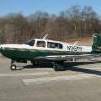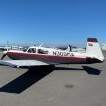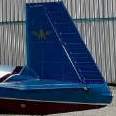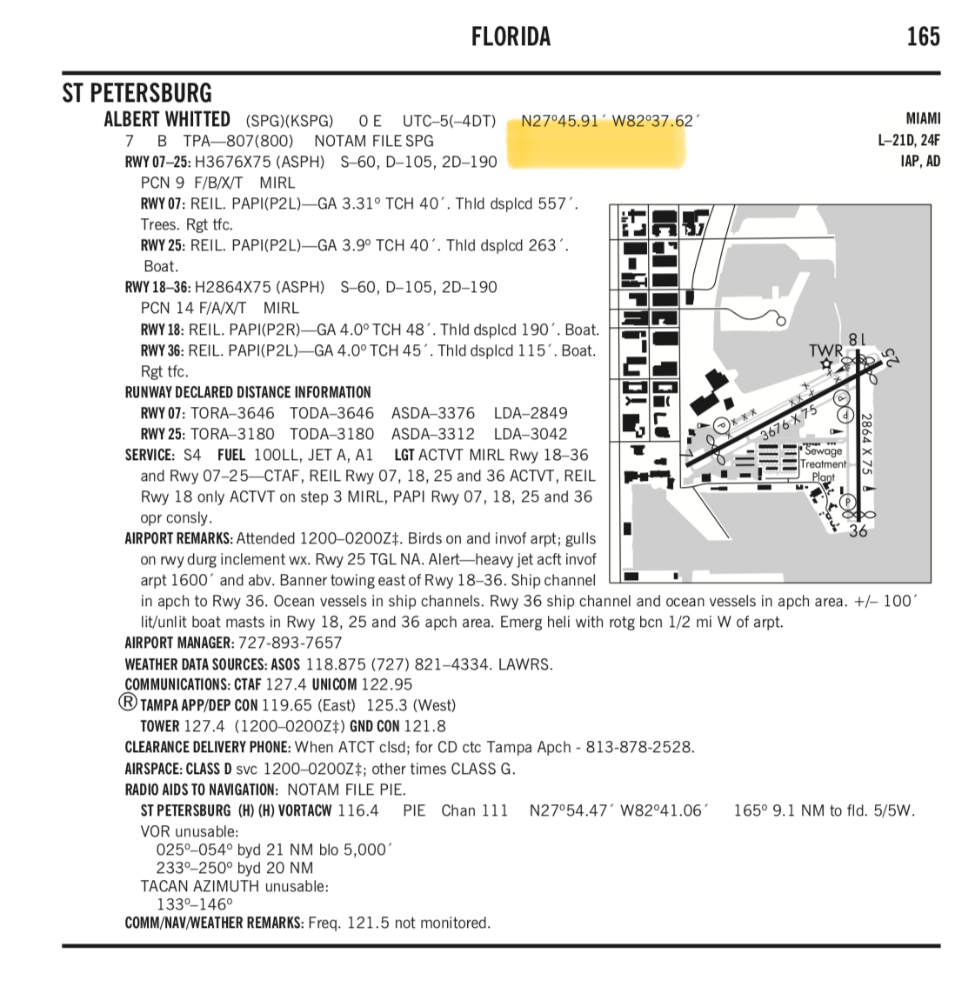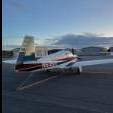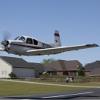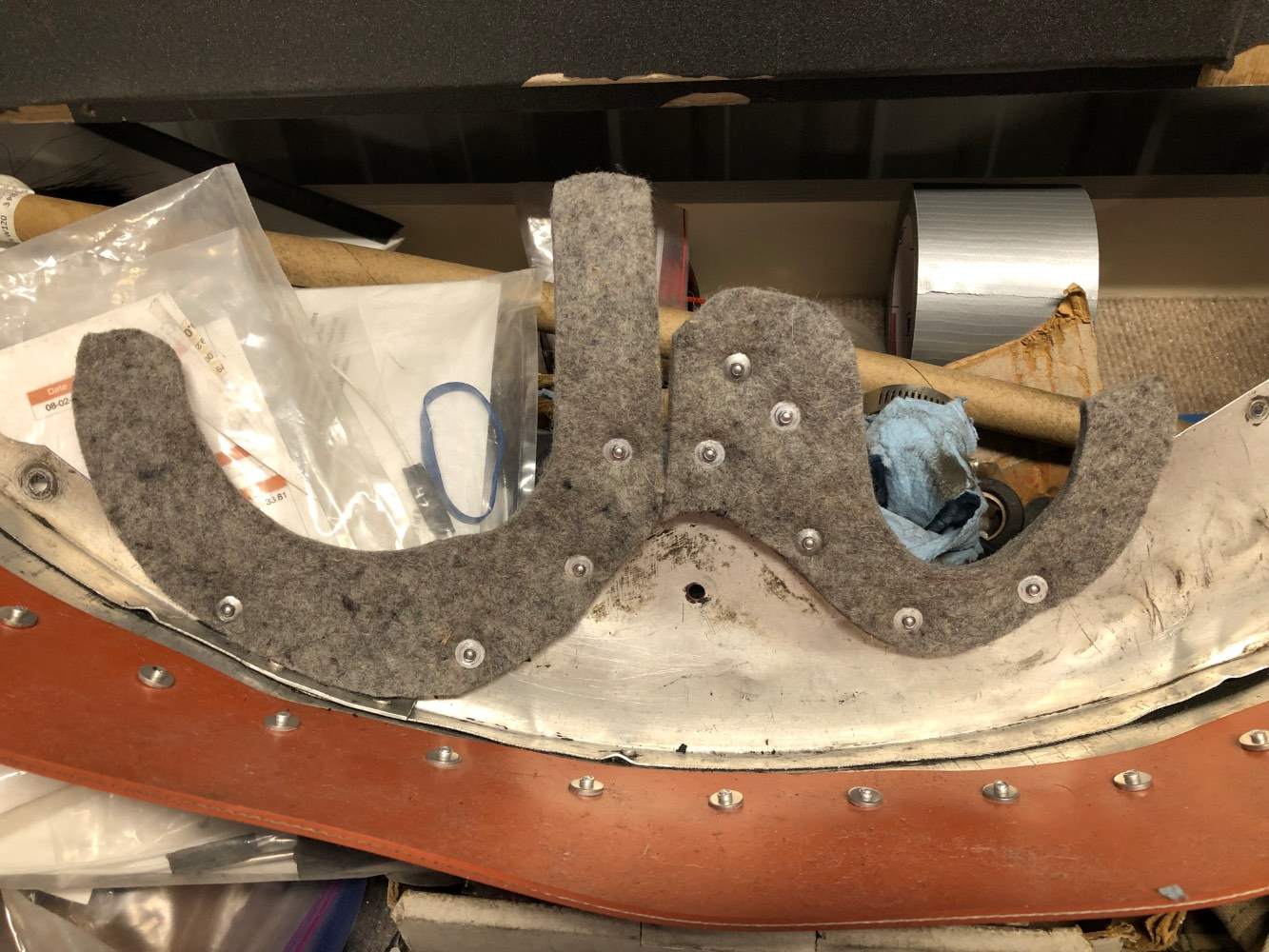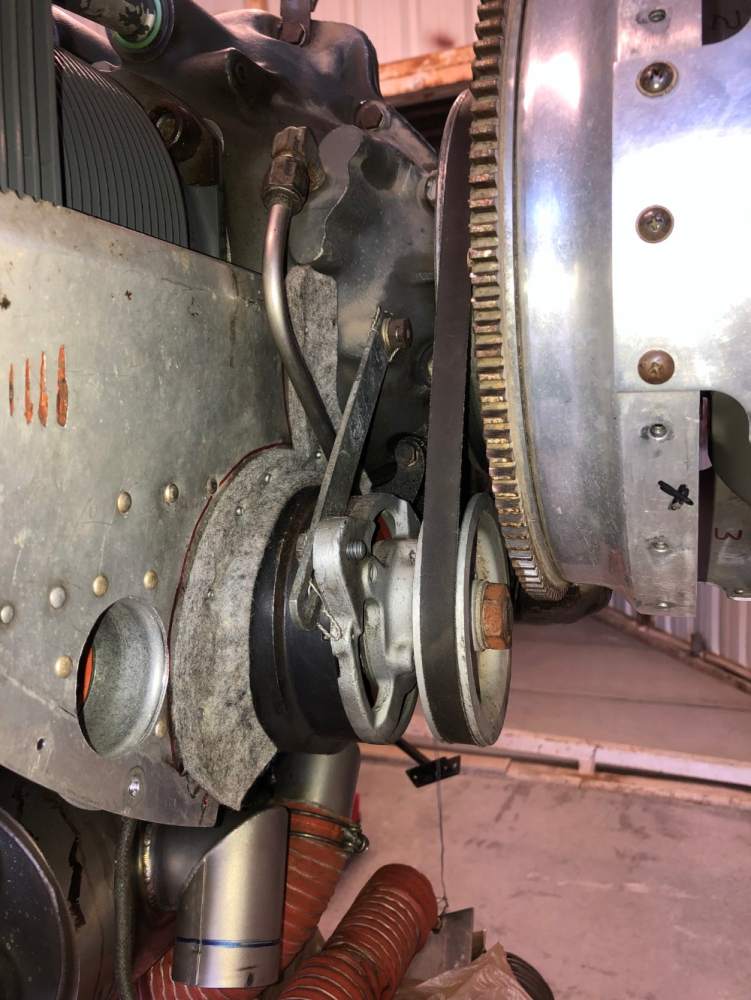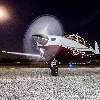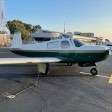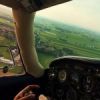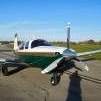Leaderboard
Popular Content
Showing content with the highest reputation on 11/15/2024 in all areas
-
I would call it that, A spade is a Spade. Until TBO is backed up by a Reg of some sort and not documented by most all manufacturers manual as a Recommendation, the shops exposure is minimal. The liability really gets tied on with the Overhaul though. Shop ties itself to that accessory for Two years.4 points
-
+1 for no yaw damper and flies like it’s on rails. 1980 M20J3 points
-
3 points
-
No, a 235 is a standard Cherokee with an O540 (downrated to make max 235HP). A little bit longer nose to accommodate the larger engine, but other than that, same size/form as a Cherokee 180. Got a fuselage extension in the 70's and eventually morphed into the Piper Dakota (with the newer wing form). Cruise speed for a 235 around 135KTAS WOT with about 16 GPH burn. Great useful load though, aircraft can haul around its own weight. Was Piper's answer to the 182.3 points
-
Not really a disagreement with this statement but context is important. would you rather be mildly cramped in a plane for three hours, or in a car for 14 hours. that is the choice myself, wire and two daughters have. so is it spacious and plush, no.. is it worth avoiding a 14 hour drive? YES!!!3 points
-
If you use the disconnect button it also disables the Yaw damp. If you press the AP button then it stays engaged. It also remembers the way it was configured last so I actually never touch the YD button, it’s always on if the AP is engaged. Personally I wouldn’t go without it. In turbulence it makes a big difference for passenger comfort.2 points
-
Sitting at the table in our Condo on the Big Island of Hawaii overlooking what some might call "Paradise", I sit back and summarize my simplistic observations on the above "discussion". 1. Why make things more complicated than they need to be? 2. Avoid simple brain overload and most importantly, 3. Just update your databases monthly.2 points
-
The answer is, It depends. There are a number of things which go into the answer. From the general to the specific... The pure regulatory directive is 91.205(d)(2) which requires "navigation equipment suitable for the route to be flown." The definition of suitable in the case of RNAV equipment in FAR 1.1 tells us to look at guidance material (BTW, this is a good thing - can you imagine if every single advance in GPS navigation capability needed to go through the formal regulatory process?) The two basic guidance materials pointed to for the pilot community are AC90-108 and the AIM. The AC was last changed 10 years ago; the AIM tends to be far more current. The POH or AFMS applicable to your equipment which may be more conservative than what the rules allow. When it does, it controls under 91.9. We've seen that final bottom line in this discussion. The FAA guidance material permits a current database or verification that the approach procedure has not changed. Garmin, however ups the requirement and requires a current database (so does Avidyne). In terms of your question, I do not see anything in either that indicates it applies to using VOR or ILS/LOC mode.2 points
-
I have a M20J with a GFC 500. I made a conscious decision not to add the yaw damper because I wanted to minimize the stuff I have to deal with operationally (you have to turn it on after takeoff and off for landing) and I wanted to minimize unnecessary equipment which requires maintenance and can fail. The mid-body Mooneys don't have the Dutch roll tendencies like Beechcraft products (worst ride I ever had in turbulence was in a Duchess), there's not a lot of adverse yaw, and the aileron-rudder interconnect already aids in coordination of rudder and aileron. I don't regret my decision a bit. What you will likely find is that those that have it like it and those that do not don't miss it.2 points
-
2 points
-
Myrtle is a mid-body K Model 231 with a GFC-500 and no yaw damper. The autopilot has been rock solid since Day 1. With almost 200 hours on this configuration, I can honestly say I see no need for it. I don’t feel like I am missing anything.2 points
-
This is what I've heard many times about the venerable C model! Stone simple O-360 than anyone can hot start, nimble and only gives up a very few knots to the heavier F that has more power to carry the extra weight . . . I kept one in sight and entered the pattern as it was exiting the runway; the flight was just over an hour long.2 points
-
Mid-body with a GFC500 with 4 servo / YD. I find it keeps the AP rock solid with bumps and well coordinated with turns. It sorta acts as a rudder trim, but not exactly. I still use right rudder on take off, but it helps to relieve the rudder pressure and keep ball centered once I have it there. To decrease the work the YD servo has to do I turn off when I'm leveling off and coordinate manually; then reengage the YD. Do you absolutely need it...no. But is it nice and makes flying more effortless when using the autopilot...yes. For me it's like having electric pitch trim...something you can do without but is nice to have. The telling thing is that I haven't heard from anyone saying that they wish they hadn't gotten the YD if they installed it. As an aside, the Encore came with the S-tec combo YD/Rudder trim unit. In this case there was a rotary potentiometer on the panel that you could swivel to engage the servo "left" or "right". It worked great on takeoff to relieve all rudder pressure and you could completely ignore your right foot and stay coordinated. The S-tec was in the location that the GFC YD needed to be installed so came out with GFC install. The GFC YD works better as a yaw damper to keep coordinated with GPSS turn. The only time I miss the S-tec is on takeoff for about 30 seconds. Long body rudder trim is mounted differently than the S-tec so the long bodies can keep their rudder trim even with the GFC500 YD.2 points
-
As an F owner, I'm going to take issue with that! I posit that the F is 95% of J at 80% the cost and is, therefore, the best 'bang for the buck' I think the OP would be happy with either one. Just depends what comes up in a timely fashion while he's shopping, IMHO.2 points
-
2 points
-
I have the M20K/231 modified with the Rocket conversion (100 HP more). I don't have it with my dual G3X and GTN750 panel and really don't miss it. I never have any yaw issues but I do need to keep my right foot on the rudder during climb, since I have no rudder trim at all. I DID have a yaw servo in my Lancair Prop Jet IVPT, and disconnected it. Too many guys with the 750 HP Turbines would get dependent on the rudder auto trim and then get in the pattern after a long cross country, A/P disconnected, and would get uncoordinated and shift all the fuel out to the wingtip, resulting in a flame out. That's a lot less of an issue with the gas engine, since you switch tanks and it relights. Not the case with a turbine. A flame out in the pattern will be a dead stick landing. I find I am a lot better "coordinated flight" pilot as a result, which with the Mooney is not as much of an issue as the IVPT. Tom1 point
-
People would tell me I didn’t need a yaw damper on my short body but I thought since I’m pulling a S-Tec30 out and installing a GFC500 I might as well go all the way, very happy I did. Take regular trips say 2-4 hours and then have to return the same day in pretty bumpy air and you will have a much more relaxed / enjoyable ride with it. Like many others have said, the ones with it will say you need it and the ones without will say you don’t. My neighbor asked me if I thought the damper was needed so I took him for a ride on yet another bumpy day, we turned it on and off many times so he could make his own decision what worked best for him.1 point
-
And ‘sometimes’ those factory part numbers can be found online with new part #s, sometimes not. Like an alternator part # I had but was no longer made, I could still trace the old part to the new part #. As for doing this particular work myself, the plane is already at Wetwingologists. He doesn’t strike me as a “let me see if I can fix it” guy, he’s a “replace it with new or I’m not signing off on it” kind of guy. Therefore I just wanted to see if I could compare prices online. Thanks!1 point
-
I dont suppose Im good at reading either. I just saved it for the pictures....not the articles (hehe). Following. Cheers!1 point
-
1 point
-
Absolutely correct on that point. The concept is neither new nor limited to GPS. I'm sure all of us can find equipment in our airplanes that is listed as "Required" in the POH but is not listed in 91.205.1 point
-
Winner winner chicken dinner! Below is from today’s low pass at speed (my pregnant wife being the camera operating victim. The gear light does go off at higher power settings….because the gear is being sucked down! I rigged them per the book where they are just missing the stops… should they be rigged to where they are against the stops with the bungees under tension? In flight at a lower altitude, I was able to get 145kts with a lot of left rudder in a slip. It also accelerated by 7 knots in a left turn. So I’ll tackle the gear first, then will see about rigging. Sent from my iPhone using Tapatalk1 point
-
He/They can also work to find a plane that fits your needs. Model, equipment, price range. Tell him your dreams and he will try to make it happen, or as close as you can afford.1 point
-
Most people without YD don't miss it. Most people with it, WOULD miss it. I have it in my K and it does a great job. Necessary? No. Desired? IMO, YES. 1) It does keep the ball centered in climbs and descents. So sort of a poor man's rudder trim. 2) It stops tail wagging. 3) See my comments. 4) I think so.1 point
-
If you want to convince yourself if you need it, just a quick push on the rudder and watch how quickly it settles down, it’s like a second in my J. Now the V tails need it.1 point
-
With 100% certainty, I can assure you that the AFM supplement must be followed regardless what the AIM states. In this case (at least with Avidyne), the AFMS is clear that all IFR operations are prohibited. The AIM is a guide to good general processes. We’re required to follow all AFM and supplements. Not trying to be difficult, but the AIM really plays no role in this.1 point
-
The 235 or Dakota has always been my favorite Cherokee variant. Used to fly one. Great plane. If your looking to get up and go somewhere though, the Mooney is hard to beat and it’s a lot of fun to fly. You’ve just gotta put the gear down when the time comes. For 20 years I’ve looked at alternatives and always come back to my Mooney.1 point
-
You want a CFI with a lot of Mooney time. This isn't when you choose the flight school CFI with a ton of 172 time and not much else. I recommend at least 500 hours of Mooney time, 1,000 is better.1 point
-
1 point
-
I had a Cherokee 180 for 10 years and then moved to a 1970 M20E. The 180 could haul a bit more, and could be flown to more grass strips than the Mooney. It had better visibility from the cockpit (bigger windows) and felt a bit less cramped in the front (the wheel well for the nose wheel takes up some space between the front seats). The back seats were more useable in the Cherokee, though not by a lot; however, the F and J models suggested will have more room in the back as well. But after a while (took me about 4-5 months to warm up to the Mooney) I love how the Mooney flies and how efficient it is. The Cherokee was barely a 110 kt bird. The Mooney is at 145 kt on about the same amount of fuel. This means the difference between a 4 hour and a 3 hour flight to Madison-Nashville, which I do to visit my son. It also can go much higher, the 180 could barely climb above 11k, I have had the Mooney comfortably above 16k and could have kept climbing; this made a big difference for me in the mountains. But some of my feelings for the Mooney could also be a factor of the accoutrements -- the Mooney has a nice autopilot with altitude hold while the Cherokee had none, WAAS GPS, nice engine monitor... These all make quite a difference. But certainly the Mooney feels more like a traveling machine (albeit sports-car like) than a trainer.1 point
-
Depends which Mooney and which year 235. The long body 235's (1973 onwards) would probably be equivalent in size to a mid Body Moooney (J model, K model and F?). The short bodied Mooneys will be a littel bit tighter than a pre 1973 235. Mooneys are actually about 1.5" wide in the cockpit than the Cherokee though. You sit in a Mooney like a sports car so everything just seems to work better.1 point
-
Regarding the Garmin AFMS since- there has been no change to Garmin’s limitations between GNS and GTN navigators - expired databases can not be used for approaches. it’s never been otherwise. Sent from my iPhone using Tapatalk1 point
-
Looks like there are some J's in that range. Best performance/efficiency for the price out there.1 point
-
I think it's a good thing that you can now update your databases via your laptop because you miss @kortopates point: It does NOT matter if the AIM section you are relying upon (or your CFII) says it's ok...Garmin's AFM supplement OVERRULES that allowance and says it is NOT okay to use an expired database for approaches; it does NOT matter that nothing has changed (vis a vis 'last update date'). It is NOT okay to use!1 point
-
Ronnie I have found that the poor man way of checking aileron rigging gets you pretty close to the boards. Simply check the aileron weights are streamlined and then check that the flaps are aligned with the ailerons. This should set zero just the same as the boards. Elevator takes more work and math, but I’ve done it in a pinch. (I’ve double checked with boards). On some models, like my early E, there was only one up stop on the outboard end of the flaps. Over time, they develop a slight twist, so the inboard side ends up with some reflex. I can’t recall when they added an inboard stop. Rudder rigging to ball centered can be worth a couple of knots. My E has a trim tab that gets bent. Surprisingly sensitive and notable if it gets bumped. Can’t tell, do you have retractable step or fixed aerodynamic step. The retractable step is draggy when down. It also causes out of trim rudder. That combination can be worth 3 knots. The fixed step is smaller and less draggy and only worth about 1 knot. If you want to talk, Kleen knows how to get ahold of me. You are on the right track. All of the details do add up and can get even an old Mooney close the the optimistic book speeds. Pitot leak….did your plane ever have a Brittain Alt hold? If so, they have an intentional calibrated leak built in. Many are unaware and will troubleshoot for hours. If not, disregard.1 point
-
Where I usually fly, above 8,000', I've realized something lately. The technique of using the "Big Mixture Pull" then the Lean Find function on the JPI EDM900 to establish something like 25 or 50 F LOP, is not dissimilar from the way I was originally taught to lean an engine while a student pilot. Lean it out until it starts to run roughly, then enrichen until it smooths out. Admittedly, the trainer was carbureted vs. the fuel injection on my J, but the procedure and end result is surprisingly similar. My J will run deep LOP. The engine just gets quieter and quieter as it produces less and less power. When it starts running rough, it's waaay LOP. On long flights up high, especially in the winter, I find that the critical limit is running rich enough to keep CHT above 300 in all cylinders.1 point
-
I’ve flown just under some similar-looking (to me anyway) clouds and had a smooth ride, while skirting around some decidedly nasty weather. Sent from my iPhone using Tapatalk1 point
-
1 point
-
They have two versions, a 1 Rpm and a 2 Rpm version. If you buy the 2 Rpm version it’s going to be 1300 bucks, and then when you find out that the airflow pushes the cowl flaps open in cruise then you get to buy the 1 Rpm version and pay another 1300 bucks because the first one is not returnable.1 point
-
You want to send it to Bobbie Eldridge at Globe in AL. The “repair” will be a new motor to the current new production Mooney spec with the next size up roller pins which will help longevity. Much cheaper than new from Mooney even though that’s exactly what you’ll be getting. Here is an older thread with more info, if it doesn't have contact info there are at least a half dozen threads on this topic to find it. Bobby is at BEldridge@globemotors.com1 point
-
When I was a green engineering intern, I had an idea for a 4 bar linkage. Using some cardboard cutouts and simple push pins, I brought my idea up to the Chief Engineer. We could move the push pins around to adjust the linkage length to get it to do what we wanted, and it was 1:1 scale. He was really happy about how stupid yet effective the cardboard method was. After some praise, he looked at me for a while, then looked at the cardboard. Then he looked at me again. His smile turned to a frown. "Tyler, where did you get this cardboard?" I shrugged and said I had found it downstairs in engineering, just a big box laying around. "Tyler, this the triple wall cardboard from GM. I know it sounds stupid, but this is a prototype packaging cardboard that we paid many thousands of dollars for. You cut up that box?!?!" Fortunately they had already made a determination about the cardboard and there wasn't any collateral damage, but I certainly lost some sleep over that1 point
-
Yup! That is another smart part of the design. Not only does it "disconnect" the steering (not really of course) but it also straightens the wheel. I would say that is so the wheel well can be narrower in the cabin, but knowing Al Mooney, it's probably in case there is some slight errant breeze in the wheel well, he would want nice smooth airflow over the wheel Here's a better example of the "self centering" action:1 point
-
It might be worth measuring the valve lift then. Lycoming cams suck. I lost 1/2 a lobe (#1/#2 intake) 9 years ago and that triggered my overhaul. It could be that the internal timing is off as well (assembled incorrectly), but I don't know how to easily check that.1 point
-
Hold on, am I wrong? It seems that at 9500 feet your G5 shows a TAS of 156 kts, which is great!1 point
-
Mike Busch does not like using EGT as a leaning reference. A corollary to that rule is don't use "lean find". Here is a video explaining why. The most salient point is made starting at 18:20. https://youtu.be/X-tKyiUZ3ts1 point
-
Asperitas https://globalnews.ca/video/10861896/asperitas-clouds-make-waves-in-lower-mainland-skies1 point
-
1 point
-
This kibig liar asshole is a scammer. PM me directly if you are interested, I am never going to contact you from some random, brand-new account, and tell you to email someone else, obviously. Shame on you, kibig, you're a piece of shit.1 point
-
I have this special technique where I spill oil everywhere and then clean it up. I am interested in @Ah-1 Cobra Pilot's tool.1 point
-
Mark, you need CMI part# 642892. You can order directly from Air Power, Inc. $10.37. I keep a few on hand. http://www.airpowerinc.com/productcart/pc/prodparts.asp?prodid=489791&catid=1&subcat=108 Steve1 point

